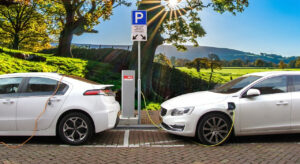Sustainability in the automotive industry is more critical than ever. Companies are now using plant-based materials in their manufacturing processes to become eco-friendlier. Including hemp in cars, construction has the potential to make vehicles carbon-negative.
Large and small automobile businesses are experimenting with replacing their plastic and metal components with hemp. Cars can also run on biodiesel and ethanol extracted from the plant.
Is producing vehicles using crops grown from mold-resistant cannabis seeds the way to a greener future? What are hemp’s unique qualities that give it the power to radicalize the automotive industry?
Read on to learn how cars made of hemp could create a healthier climate.
Why Hemp?
Hemp comes from the same Cannabis sativa species as its psychoactive cousin but doesn’t have enough tetrahydrocannabinol (THC) to create a high. The crops contain less than 0.3% cannabinoid, making them legal for industrial cultivation.
Farmers grow hemp without fertilizers or pesticides and harvest approximately 250% more fibers from the plants than from cotton. The crops also return 60–70% of the nutrients they use during their lifespan to the soil.
These characteristics make hemp one of the most sustainable plants cultivated today. Crops are versatile and used to create various products, including clothing, textiles, paper, bioplastics, insulation, and fuel.
Henry Ford’s Hemp Car
During World War II, there was a global steel shortage, with ships, tanks, and other machinery requiring all available resources. Henry Ford wanted to overcome this problem by developing a vehicle using agricultural products.
In 1941, Ford built a hemp car consisting of 70% sisal, wheat straw, and hemp fibers. It also ran on ethanol extracted from cannabis plants and other farm waste. The inventor’s experiment was a step toward his dream to “grow automobiles from soil.”
Popular For You: 7 Best Cars With Heads-Up Display Review
He claimed the car weighed about 300 pounds less than conventional models with ten times the impact strength. The vehicle was safer and less expensive than its steel equivalents.
Ford’s hemp car was never mass-produced, as the American automobile industry collapsed during the war. He destroyed his prototype and never published his formula.
Although Henry Ford’s idea wasn’t feasible at the time, carmakers didn’t forget it. His design inspires the hemp-bodied vehicles rolling off the line today.
Renew Sports Cars makes custom automobiles using the crop’s fibers. In 2010, Motive Industries revealed the Kestrel, an electric vehicle built with a hemp body.
4 Benefits of Using Hemp to Manufacture Cars
A car made of hemp offers several propulsion and construction advantages. Here are four reasons why using this crop in the automotive industry has the potential to create a greener planet.
1. Reduces Mass
Hemp-based bioplastics are lighter than fiberglass and steel, as the plant’s filaments have a lower molecular weight. This reduced mass decreases the heaviness of vehicle manufacturers’ end products by up to 44%.
Automobiles that weigh less have a better motive force and are an effective way to improve fuel
economy.
2. Environmentally-Friendly Production Process
Car manufacturing is responsible for 9% of the world’s CO2 emissions, giving it an ecological footprint larger than Europe’s.
Cultivating hemp absorbs six tons of carbon dioxide per acre, which doubles if farmers harvest twice a year. Using the plant’s fibers to build vehicles could make the process more environmentally friendly and reduce the industry’s impact on the planet.
3. Burning Hemp Biofuels Produces Less Soot and Gasses
The average passenger vehicle emits 4.6 tons of CO2 annually, while gasoline produces vapors contributing to air pollution.
Running automobiles on biodiesel, like Henry Ford’s hemp car, could improve our atmosphere. These fuels cause fewer emissions and reduce soot. Producing hemp fuels also results in less wastewater and hazardous byproducts than petroleum.
4. Stronger Than Steel
Hemp-based bioplastics are 2.5 times stronger than steel. The plant’s fibers have a better strength-to-weight ratio than the metal, making car panels less vulnerable to denting. This material’s sturdiness also offers better crash protection, helping prevent occupants from sustaining severe injuries in an accident.
Car Makers Using Hemp
Several well-known car makers use hemp additives in their vehicles, though they don’t advertise it. Typical applications include using plant fibers to produce door cladding, dashboard panels, upholstery, and floor insulation.
Here are a few famous companies that use eco-friendly materials:
- BMW: The company’s 2013 i3 has door panels lined with hemp, making the car 770 pounds lighter than conventional plastics.
- Volvo: This manufacturer uses natural fibers rather than glass to reduce the weight of its vehicles.
- Mercedes Benz: The luxury brand has added hemp parts to its cars since 1994. The C-Class contains over 30 bioplastic components.
- Porsche: Designers of the 2019 Cayman GT4 incorporated several hemp-based parts, arranging the plant’s filaments to look like carbon fiber.
Many other businesses are starting to substitute the standard components in their cars with biomaterials, including Peugeot, Hyundai, Audi, and Volkswagen.
As the plant rises in popularity, hemp plastics could become a quality to look for in electric cars.
The Future of Sustainability in the Automotive Industry
We have a long way to go before all manufacturers model their vehicles on Henry Ford’s hemp automobile. The plant is recognized for its potential to revolutionize the industry, so we may soon see large-scale production of bioplastic cars. Keep your eyes peeled for the next vehicle made with hemp.
Discover more from Locar Deals
Subscribe to get the latest posts to your email.



